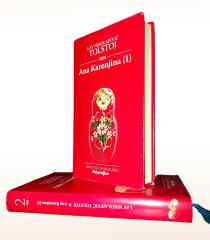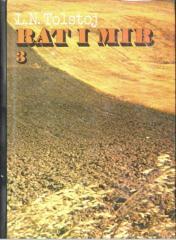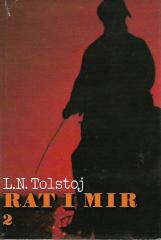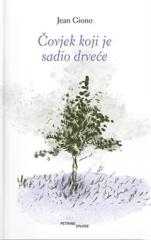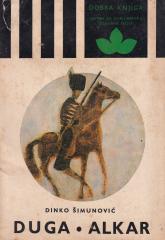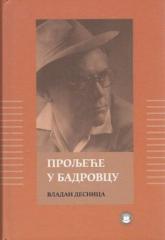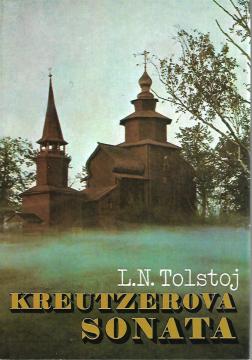
Kreutzerova sonata
Lav N. Tolstoj, majstor književnosti, istražuje duboke teme ljudskog postojanja, morala i društva u svojim novelama „Mećava“, „Albert“, „Tri smrti“, „Otac Sergije“, "Krojcerova sonata", „Gospodar i sluga“, „Posle plesa“ i „Hadži Murat“.
Mećava (1856): Putnik, inspirisan samim Tolstojem, kreće na putovanje kočijom kroz snežnu mećavu. U borbi sa silama prirode, vozači i putnici se suočavaju sa strahom i smrtnošću. Mećava postaje metafora za haos života, a narator, posmatrajući hrabrost i slabosti svojih saputnika, dovodi u pitanje smisao postojanja. Delo odražava Tolstojevo rano interesovanje za egzistencijalizam i prirodu.
Albert (1858): Mladi aristokrata upoznaje Alberta, talentovanog, ali siromašnog muzičara sklonog alkoholizmu. On pokušava da mu pomogne, ali shvata da društveni jaz i Albertova samodestruktivnost čine spasenje nemogućim. Priča istražuje umetnost, klasne razlike i nemogućnost prisilne promene, odražavajući Tolstojevu fascinaciju moralnim dilemama.
Tri smrti (1859): Tri priče o smrti – plemić, kočijaš i drvo – isprepletane su u meditaciju o prolaznosti. Plemić se plaši smrti, kočijaš je stoički prihvata, a drvo umire prirodno. Tolstoj suprotstavlja ljudske stavove prema smrti, naglašavajući duhovnu jednostavnost, što anticipira njegova kasnija filozofska razmišljanja.
Otac Sergije (1898): Stepan Kasatski, ambiciozni oficir, postaje monah nakon ljubavnog razočaranja. Kao otac Sergije, bori se sa ponosom, pohotom i slavom, padajući u greh pre nego što pronađe mir u jednostavnom životu. Ova priča odražava Tolstojevu kasnu opsesiju duhovnom transformacijom i odbacivanjem svetskih iskušenja.
Gospodar i sluga (1895): Trgovac Vasilij i sluga Nikita kreću na putovanje tokom mećave. Vasilij, vođen pohlepom, ugrožava obojicu, ali Nikita, u duhu hrišćanske žrtve, spasava ga po cenu sopstvenog života. Priča ističe Tolstojev ideal nesebičnosti i kritiku materijalizma.
Krojcerova sonata (1889): Pozdnjakov, opsednut ljubomorom, ubija svoju ženu, verujući da su brak i strast koren zla. Priča, inspirisana Betovenovom sonatom, izazvala je kontroverze zbog svojih radikalnih stavova o seksu i braku, odražavajući Tolstojevu kasnu moralnu strogost.
Posle plesa (1903): Ivan Vasiljevič se seća plesa gde se zaljubio u devojku, ali svedok brutalnog prebijanja njenog oca, pukovnika, razbija njegove iluzije o ljubavi i društvu. Ova novela kritikuje licemerje vojske i aristokratije, odražavajući Tolstojev pacifizam.
Hadži-Murat (1904): Hadži-Murat, čečenski pobunjenik, bori se između lojalnosti svom narodu i privremenog saveza sa Rusima. Njegova tragična sudbina otkriva sukob između lične časti i političkih snaga. Objavljena posthumno, ova novela je remek-delo Tolstojevog kasnog stila, kombinujući epsku naraciju sa moralnom dubinom.
Ove kratke priče prikazuju Tolstojev razvoj od ranog realizma („Mećava“, „Albert“) do dubokih moralnih i duhovnih tema („Tri smrti“, „Otac Sergije“). „Krojcerova sonata“ i „Posle igre“ odražavaju njegov radikalni pacifizam i kritiku društva, dok „Gospodar i sluga“ naglašava hrišćanske ideale. „Hadži Murat“, remek-delo njegovog kasnog opusa, kombinuje istorijsku naraciju sa razmišljanjima o slobodi. Ove priče, manje poznate od romana, ključne su za razumevanje njegove filozofske evolucije.
Rana dela poput „Mećave“ i „Tri smrti“ bila su hvaljena zbog svog stila, ali je „Krojcerova sonata“ izazvala skandal zbog kritike braka, pa je čak bila i zabranjena u Rusiji. „Otac Sergije“ i „Posle igre“ kritikovali su crkvu i vojsku, izazivajući kontroverze. „Hadži Murat“ je proglašen klasikom zbog svoje složenosti i čovečnosti. Danas se ove priče smatraju draguljima Tolstojevog genija.
Više primeraka je u ponudi
